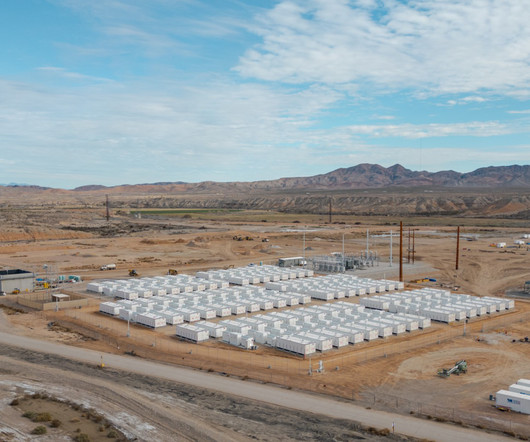Nevada put big battery energy storage where a coal plant used to be
Baua Electric
APRIL 29, 2024
Nevada utility NV Energy’s largest battery energy storage system sits on a former coal-fired power plant site and will save customers a lot of money. The new BESS is on the site of the former 557-megawatt (MW) coal-fired Reid Gardner Generating Station, which was demolished in 2019. Energy Vault will maintain the system.































Let's personalize your content